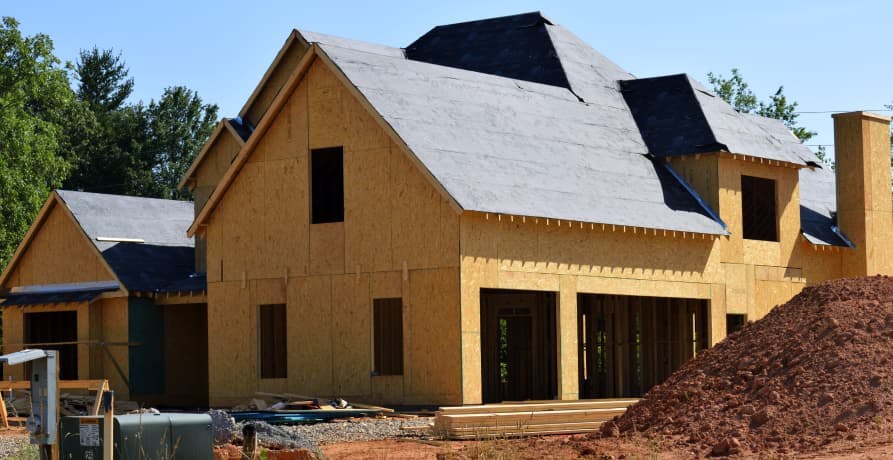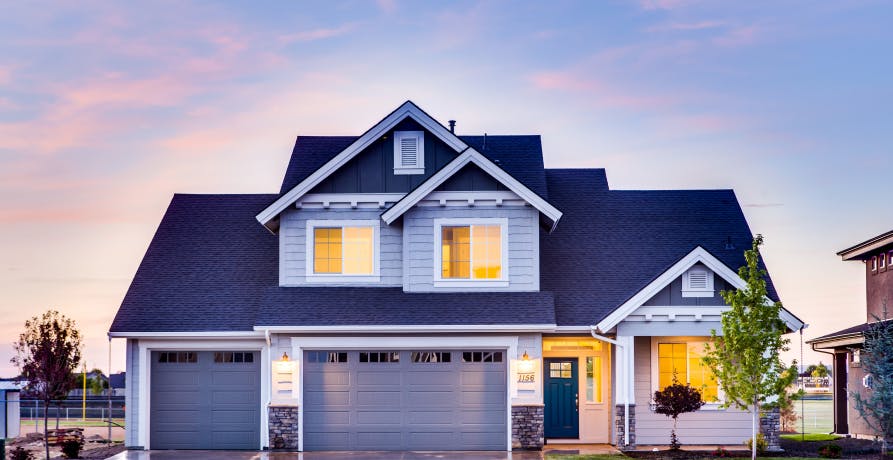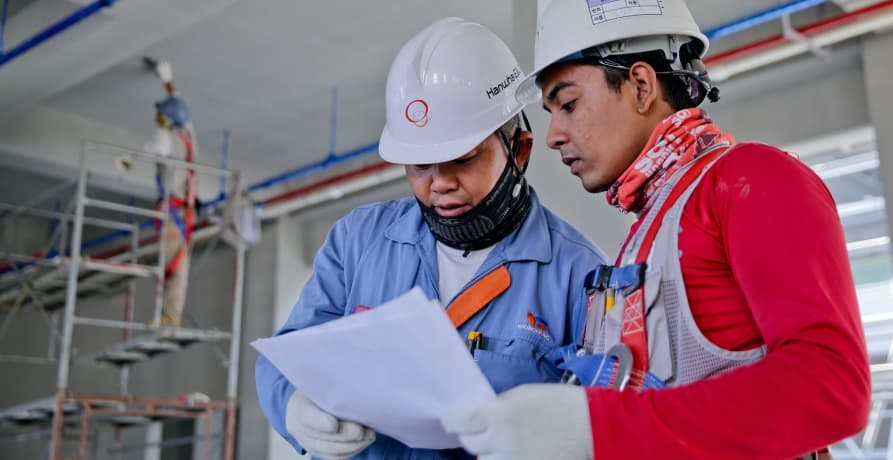ESG / CSR
Industries
Insulation and Energy Savings: the Winning Combination



Climate change is an issue that affects us all and necessitates that every individual, company, and government take action to try to prevent further global warming and the deterioration of our environment. In order to mitigate the worst effects of climate change it’s essential that we make every effort to reach net zero targets and to keep global temperature rise to under 1.5 degrees celsius. If we’re going to have any chance of achieving this we need to evaluate every aspect of our lives and consider what actions can be taken to reduce carbon emissions.
One of the most effective ways that we can cut down on carbon emissions as both individuals and as a business or organization, is to evaluate building energy efficiency and to take steps to make sure it is properly insulated.
Insulation is an incredibly effective way to reduce energy consumption and carbon dioxide emissions, while also reducing utility bills. Something that is on most people’s conscience given the ongoing cost of living crisis.
👉 In this article we’ll explore why energy saving is important and how insulation can effectively help to achieve this.
How insulation can help to save energy
By insulating a building properly you not only save money on energy bills but also reduce greenhouse gas emissions and improve the comfort of those who are living or working in these buildings.
Insulation is one of the most effective ways to save energy, and by adding insulation to your home or business you may be able to save a significant amount of money. By improving insulation in your home or business it’s possible to retain up to 80% of the cooling and heating that would have otherwise been lost without it - this means that your home or business will be cooler in the hot summer months and warmer in the cold winter months, requiring less AC and heating.
And it’s not just energy saving that insulation that helps with - insulation also helps to reduce condensation, mold and damp; issues that can have an impact on your health.

How do buildings lose heat or cool air?
In order to understand why insulation is so effective at saving energy for your home or business, it’s useful to understand how heat is lost in a building. There are three processes that transfer heat - conduction, convection, and radiation:
Conduction
Conduction is where heat or cool air is lost from a building through a solid material such as a wall, windows, and roof. The heat is conducted through these materials from a high temperature to a low temperature - most commonly this will be heat escaping from the inside of the building where it tends to be warm, to the outside of the building where it’s colder, but it may also be in the opposite direction during warmer months.
Convection
Convection is where heat or cool air is lost when doors are opened, or through the cracks or openings in the walls, windows, or doors.
Radiation
Conduction and convection are the most common ways that heat or cool air is lost from buildings. Radiation only tends to account for 10% of heat or cool air loss from a building and most of this is through windows. An example of this type of heat transfer is when radiation from the sun is absorbed by a building's walls and roof before being transferred into the home.

Insulation works to reduce and disrupt this heat flow so that there is less of a temperature difference between two areas. This means that in winter heat flow between heated rooms and the exterior or unheated rooms is reduced by insulation, and in summer heat flow from the exterior to the interior of a building is reduced through effective insulation. The effect is that less heat is lost in the winter, and less cool air is lost in the summer, which means that you can save on energy consumption - and on energy bills! It’s a win-win situation.
How to install insulation in your home or business
Investigate energy loss
The first step in making your home or business more energy efficient is to find out exactly how much energy the building consumes. Depending on what country you’re in this information may already be available through some kind of energy performance report or certificate. Just be sure to check the date on the report as if it’s really old or if improvement work has been carried out since, it may not be very accurate.
Another option is to carry out a home energy audit. This means that a professional assessor will come to the building to conduct an in-depth assessment of its energy performance - including thermal imaging which will show exactly where the most heat is being lost. This can be incredibly useful because it will tell you what areas to target with your insulation in order to improve energy performance.
Install insulation
Around a third of heat lost from buildings escapes through the walls, with approximately a quarter escaping through the loft and roof. This is why it’s best to target these three areas when installing insulation in your home or business. Let’s take a closer look at how you can achieve this below:
Wall insulation
Uninsulated buildings lose a third of their heat through their walls, with the worst offenders being detached buildings that are exposed to the outside air in all directions. The age of the building will also have an impact on how much energy is lost through its walls and will also affect what kind of insulation can be installed to improve energy efficiency.
Homes that are more than 100 years old for example will usually have solid walls made from brick or stone, and will therefore need internal or solid wall insulation systems in order to improve the energy efficiency of the building.
Homes built between 1920 and 1990 are more likely to have some kind of cavity wall which means that they're made from two walls with an air gap in between. So long as the gap between the walls isn’t smaller than 5cm wide it’s quite easy to install insulation between the two walls.
Modern homes are usually much more energy efficient already and will probably already have insulation between their cavity walls. But an energy efficiency audit will help you to understand if there are any areas of improvement that can be made.
Floor insulation
As much as 15% of a building's heat or cool air can be lost through the floors, and so insulating a building’s floors can also significantly cut down on energy usage. Because heat rises, upper floors don’t tend to need extra insulation but it is incredibly beneficial for ground floors, or floors that sit above an unheated space.
Much like insulating walls, when insulating floors you’ll need to understand what kind of flooring the building has in order to install the correct insulation. For example suspended floors, which are usually made from floorboards, sit above an empty space which means that insulating the area is quite straight forward. Whereas floors that are made from solid stone or concrete will require a layer of insulation to be added on top.
Roof insulation
Roof insulation can make a big difference when it comes to reducing building energy and by installing roof insulation you can significantly cut down on carbon emissions.
Depending on what type of roof the building has insulation will either be loft insulation or rafter level insulation, both of which is where insulation that is added under a pitched roof. Where the roof is flat the insulation will be something called warm deck, cold deck, or inverted roof insulation.

Hot water cylinder and pipe insulation
Uninsulated water tanks and pipes can lose a significant amount of heat which means that the energy spent on heating up water in the first place is lost unnecessarily. Insulating a building’s hot water cylinders and pipes can help cut down on this lost energy and is relatively cheap and easy to do.
Cylinder jackets are simple to fit and will help to insulate the building’s water cylinder; hot water pipes can be cheaply insulated using a foam tube which can be purchased in most DIY stores; reflective panels placed behind radiators can help to reduce the amount of heat lost through external walls (something that is particularly useful in the case of an uninsulated solid external wall).
Reduce draughts
Draughts are bad news when it comes to energy consumption - all the hard work it takes to heat or cool a room can be depleted with a simple drought. Thankfully they’re pretty easy to solve and don’t require any special skills. You can buy off the shelf products that solve draught issues by sealing off the sections around windows and doors, as well as keyholes and letterbox openings.
What are the benefits of installing insulation?
Of course one of the main benefits of installing building insulation is that it reduces energy consumption and therefore also reduces carbon emissions. However, there are a number of other benefits that are also brought about by installing insulation. Let’s take a look at these below:
Cost savings
The cost can put some off the idea of installing new insulation, however, it doesn’t take long for this upfront cost to be completely outweighed by money saved on energy bills. Take the cost of insulating a hot water tank for example - on average the cost of installation is recuperated in under a year alone!

Easier to sell the building
Energy efficiency is important to those looking to buy a home or building. Not only are people more concerned with energy efficiency due to the rising cost of fuel and electricity, they also increasingly care about climate change and are keen to reduce their impact on the environment. In fact some studies show that 36% of homeowners consider home heating and cooling costs to be “very important” when looking to purchase a building.
Regulations are getting stricter
In many countries regulations on new buildings already require a minimum amount of efficiency when it comes to building insulation, and this often extends to any renovation or update work carried out on a building too. However, even older homes may soon be affected by increasingly strict building standards. For example in some countries a minimum amount of energy efficiency is required before you’re able to rent out a building.
Better for health
It may not be immediately obvious but a properly insulated building may also benefit human health. Thanks to pollution asthma rates are on the rise, as are allergies. Properly insulated buildings can actually help to reduce the effects of these conditions by keeping harmful pollutants, chemicals and allergens out.

Sound insulation
Building insulation can do wonders for sound. Whether it’s noise from outside or from within the building itself, building insulation can really help when it comes to reducing noise nuisance. This is particularly important in office buildings where you need to create an environment in which people can get on with their work, or around bedrooms - so that you’re able to get a good night of sleep!
Round up
Insulation is an important weapon in the fight against climate change. By ensuring that buildings are properly insulated (particularly older buildings which can be very draughty) we are able to effectively lower our energy consumption which means that carbon emissions are also reduced.
Increasingly governments are expanding regulatory demands and implementing stricter home building standards, and so even if the fight against climate change doesn’t sway individuals or companies to take steps to improve the energy efficiency of their buildings, soon they may not have a choice.
What about Greenly?
At Greenly we can help you to assess your company’s carbon footprint, and then give you the tools you need to cut down on emissions. Why not request a free demo with one of our experts - no obligation or commitment required.
If reading this article has inspired you to consider your company’s own carbon footprint, Greenly can help. Learn more about Greenly’s carbon management platform here.


